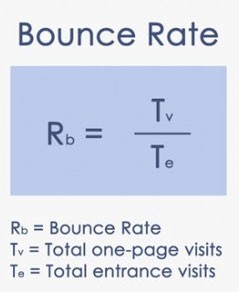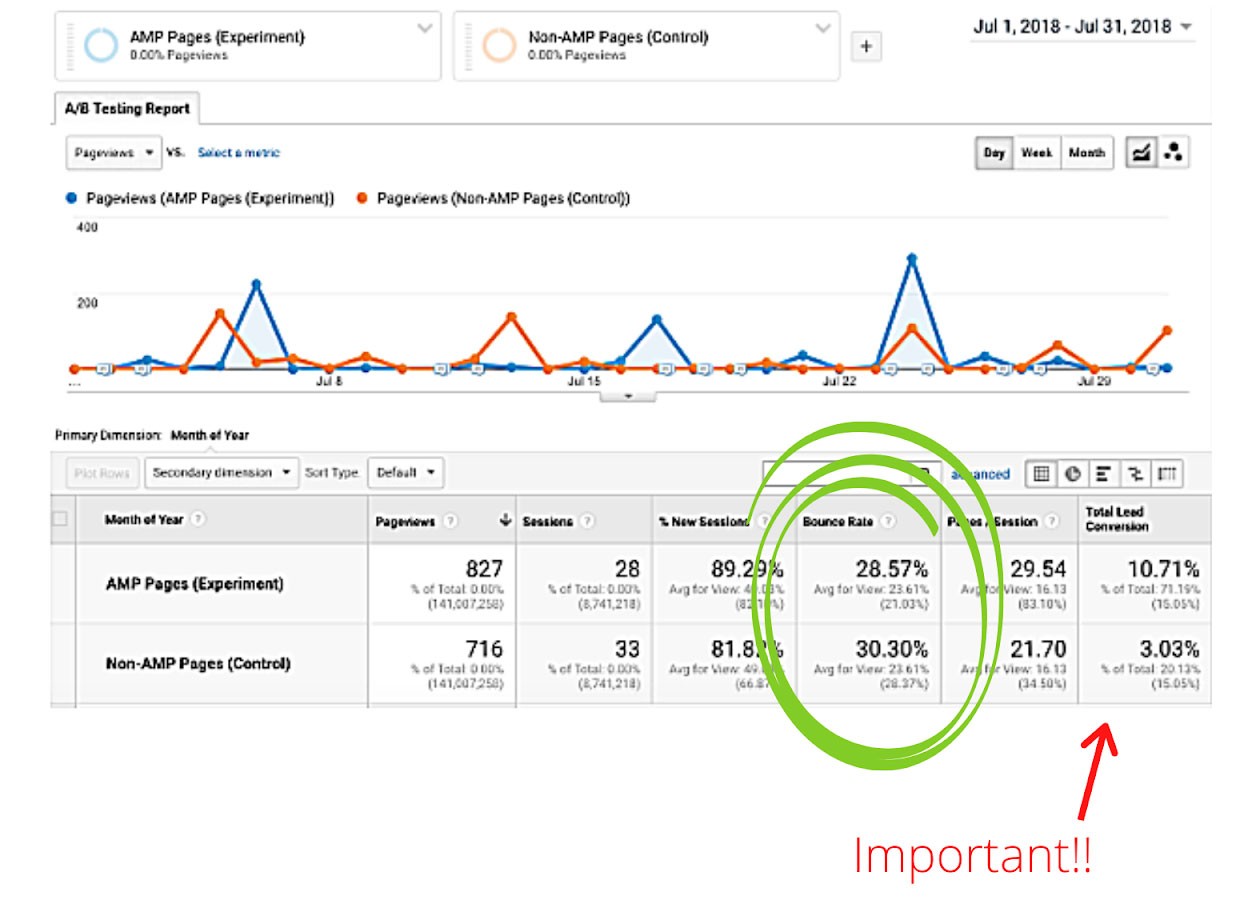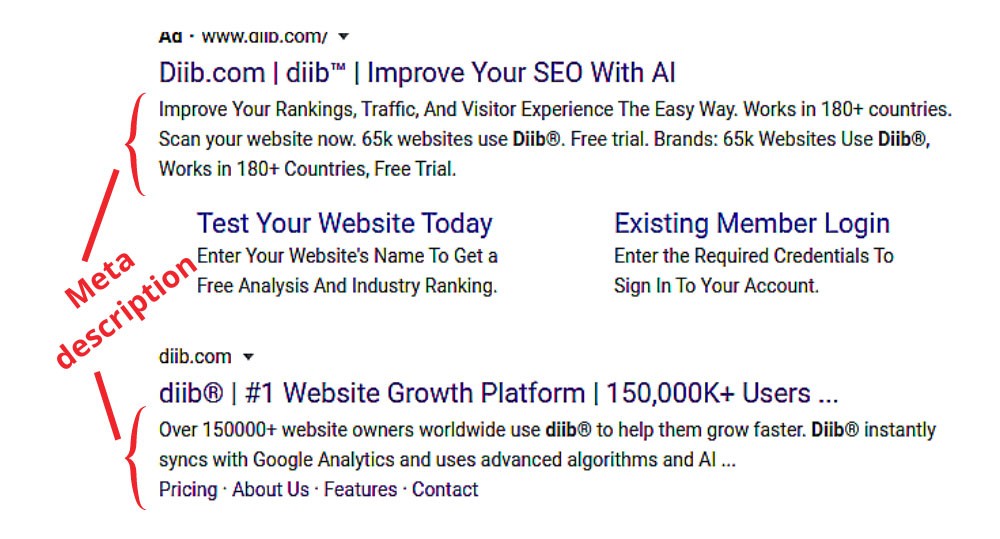Monitoring the overall performance of your website is very important to your business. It helps you determine effectiveness of your optimization efforts. From the performance statistics, you can tell how people perceive the content you provide on your website. You will be able to see the conversion rate of your website based on the performance of your different web pages.
Two important metrics of gauging website performance are the bounce rate and the exit rate. While both metrics give a picture of what visitors do on each page, they may mean different things based on the nature of business or website. Thus, you need to evaluate the bounce rate vs. exit rate to understand how to interpret what they represent. That will help you determine the best strategy to improve them.
Bounce Rate vs. Exit Rate
Both the bounce rate and the exit rate indicate the point at which a visitor leaves a page. However, the difference is in the number of other pages that the visitor accesses. The bounce rate refers to the number of exits from a given page, given that the page was also the landing page for the visitors. For instance, if someone visits a blog page and exits before going to any other page on the website, then that is a bounce. On the other hand, an exit occurs when a person leaves a page and website entirely. Thus, the bounce rate refers to the number of exits from a landing page compared to the number of views for that page. The exit rate is the number of people exiting the website at a given page compared to the number of views for that page.
While they sound similar, the bounce rate is for single-page sessions while the exit rate is for last-page sessions. Bounce rate on google analytics would capture a bounce only if the visitor exits directly from the page he/she entered without accessing other pages. It means that all bounces are exits. However, not all exits are bounces, as some exits occur after the visitor accesses several pages. A high exit rate would therefore not mean a high bounce rate as some of the exits would not be on the page of entry. Similarly, a low bounce rate does not mean a low exit rate as the bounce rate only accounts for the exits on the landing page and not on subsequent pages.
Which Rate Should You Optimize?
Some people may wonder about which of the two rates is more important. Both rates are important in evaluating the performance of your website. While they sound similar, their interpretation explains different things. To get a clear and accurate picture about your website, you need to interpret the two rates correctly based on context. The same metrics would mean different things for different businesses or pages. For example, a high bounce rate may be valuable to one page but detrimental to another. Contact information pages are an example of pages with high bounce rates.
The bounce rate signals user satisfaction while the exit rate signals conversion. Depending on the type of website and the pages, the statistics may mean different things. For instance, a high bounce rate may mean low user satisfaction. That could be due to a range of issues such as loading speed, site quality, and content. However, it may also mean that visitors get the information they need from the landing page and do not need to open other pages. Most informational pages may therefore have a high bounce rate because they contain all the information that a visitor needs and not because of poor user experience. For the exit rate, a high rate may suggest low conversion as visitors choose to exit from a given page rather than continue checking other pages. However, it could also be that the page is optimized for exits. Such pages may include checkout pages for eCommerce websites. The high exit rate would therefore be a positive metric for such a page. The optimization of the bounce rate and exit rate would depend on the nature of business, website, and the problems you face with your website.
The Bounce Rate
Unlike the exit rate that is for the last page a visitor views before leaving a website, a bounce rate is for pages where the visitor only accessed a single page for a given browsing session. The bounce rate meaning is therefore the percentage of single – page sessions for a particular page. It means the visitor only opened one page during the browsing sessions and exited without going to any other page on the website.
The bounce rate involves dividing the total number of single-page visits in a page by the total number of entry visits to the page. The bounce rate formula is thus:

Here is a simple example of a bounce rate calculation for pages A, B, C, and D.
Visitor 1: Page A – Exits
Visitor 2: Page A – Page C – Page D – Exits
Visitor 3: Page B – Exits
Visitor 4: Page A – Exits
Visitor 5: Page A – Page B – Page C – Exits
From the information,
You Might Also Like
Page A has a bounce rate of 50%
Page B has a bounce rate of 100%
Bounce Rate Meaning
Understanding the bounce rate meaning would help you understand the performance of your website. While most people may think that a high bounce rate is bad and a low bounce rate is good, the metric would have different implications to different websites. Thus, seeing a high bounce rate should not always be a cause for alarm. Sometimes it may be normal.
Test your SEO in 60 seconds!
Diib is one of the best SEO tools in the world. Diib uses the power of big data to help you quickly and easily increase your traffic and rankings. We’ll even let you know if you already deserve to rank higher for certain keywords.
- Easy-to-use automated SEO tool
- Keyword and backlink monitoring + ideas
- Speed, security, + Core Vitals tracking
- Intelligently suggests ideas to improve SEO
- Over 500,000k global members
- Built-in benchmarking and competitor analysis
Used by over 500k companies and organizations:
Syncs with 
What is a Good Bounce Rate?
How one views and interprets the bounce rate depends on the nature of the website. Thus, the answer to the question, “What is a good bounce rate?” will be different for different people. For instance, a marketing company would want a low bounce rate for its landing page. Therefore, a bounce rate of about 80% would mean that the marketing campaign is poor and the company needs to change it. The campaign should be able to make the visitors click on other links on the web page. It should make the visitor want to visit other pages within the website.
While the bounce rate should be low for most pages, it is okay to have high bounce rates for some pages. For instance, the “contact us” page would normally have a high bounce rate because visitors tend to get everything they need on the page. On average, the bounce rate should be around 50%. Bounce rates of between 20% and 50% are low while any rate about 50% is high. However, that is still dependent on several other factors such as the nature of the industry, web page or website.
For website owners, the goal should be to try finding a healthy bounce rate. That is because each site has its unique goals that define its design. As such, the metrics may differ for different sites. While some websites such as E-Commerce sites require more browsing for conversion into sales, some sites such as informational sites may not require further browsing. Thus, a high bounce rate for an e-Commerce website may mean dissatisfaction from the visitor while it means satisfaction on an informational website. Information-specific websites such as online dictionaries would therefore have high bounce rates indicating great satisfaction. The exits from such pages mean the visitor got what he/she desired.
Some websites are one-page by design. For such websites, the bounce rate is 100%. The bounce rate therefore fails as a metric of performance as it will always be 100% due to the design of the website. To be able to analyze performance for the website, you will need to look at other factors such as time spent on the page.
Checking Your Website Bounce Rate
Before you can evaluate the performance of your website, you need to define the bounce rate ranges for your website. You have to state what would be a high or low bounce rate. Once that is set, you can then start working on interpreting the data on your website. Google Analytics is a very powerful and useful tool when it comes to analyzing your website. It collates data in a way that is easily understandable. It provides data on several performance metrics for the website and allows you to understand where you need to improve. It is not difficult to understand bounce rate in google analytics even for someone that has never used it before.
The audience overview tab on Google Analytics provides a range of metrics that you can use to analyze your website. You can select to view the bounce rate of individual pages or the entire website.

Clicking the bounce rate metric button will give you information about the entire website. You will also get a graph for the period you select, showing you key metrics. You can customize the period to give you information for the specific period you wish to analyze. For individual pages, you need to click on “Behavior” and then select “All Pages” for you to get the bounce rate information on the pages.
Reducing the Website Bounce Rate
From time to time, your bounce rate will be high. That may be because your website contains one or more of the following.
- Music and streaming videos
- Slow speed
- Low quality traffic
- Bad page design
- Bad user interface and bad user experience
You need to reduce the bounce rate for your website so that it is more effective. You can do several things, depending on the issues you face on your website. Below are some of the actions you may need to take to optimize your bounce rate and keep it low.
Improving Your Content
One of the easiest ways to make your website “sticky” is by having quality content. Improving the content on your website will motivate the visitor to venture into other pages. Interesting content written in a flowing style is bound to capture the attention of readers, making them want to explore your website more. That will lead to greater conversion as the visitor will end up visiting more pages that are likely to convince him/her to make a purchase.
Always ensure your content is relevant to your business. It should also provide useful information to visitors. Veering off to unrelated topics would lead to a loss of interest in visitors, leading to high bounce rates.
What does it mean to have a “sticky” website? A sticky website can be defined as a website that encourages visitors to hang around longer than usual and generally return in the future.
Improving Readability
You may have great content and still record high bounce rates due to the readability of your website or content. The formatting of your website has a huge bearing on how visitors interact with it. It creates an impression that will determine whether the reader stays on the website or exits. Breaking content into readable paragraphs and using headings and subheadings as well as bulleted lists makes it more readable.
Avoiding Pop-Ups
Pop-ups can be very annoying. They cause distraction and can sometimes ruin the user experience. Pop-ups that prevent readers from reading content are especially annoying. Thus, to reduce bounce rates, you should try to minimize the use of pop-ups on your website. That would improve the user experience and increase the probability of the visitor venturing to other pages.
Using Targeted Keywords
Targeted keywords optimize content for search engines. However, you need to use the keywords appropriately to avoid raising your bounce rate. Using appropriate keywords can draw visitors to your website. They also help keep them interested in the content on other pages on the website. Thus, you need to understand how to use keywords to effect a decrease in bounce rate. Here is an example of Diib’s keyword tool where you can learn just that.

Using Meta Descriptions
Meta descriptions provide additional information about your web content on search engine results. They help weed out visitors that are likely to lead to bounces. The information in Meta descriptions allows people to determine whether the content is relevant to them. A brief, concise and targeted Meta description will have a huge impact in reducing the bounce rate for your website. For example:

The Exit Rate
The exit rate is the proportion of multi-page sessions that end in a particular page. It looks at how often visitors leave the website at a given page after accessing other pages. The exit rate formula involves dividing the total number of exits in a page by the total number of views for the same page over a given period. In short, the exit rate formula is presented as:

Here is a simple example of an exit rate calculation for pages 1, 2, 3, and 4.
Visitor A: Page 1 – Exits
Visitor B: Page 1 – Page 3 – Page 4 – Exits
Visitor C: Page 2 – Exits
Visitor D: Page 1 – Exits
Visitor E: Page 1 – Page 2 – Page 3 – Exits
From the information,
Page 1 has an exit rate of 50%
Page 2 has an exit rate of 50%
Page 3 has an exit rate of 50%
Page 4 has an exit rate of 100%
Exit Rate Benchmarks
Exit rate benchmarks are parameters that you will be using to analyze the performance of your website. It is important that you set your benchmarks when setting up your analysis tool such as Google Analytics or exit rate adobe analytics. You select your industry and the analysis tool will then provide the exit rate averages for websites within your industry. The benchmarks allow you to compare your website’s performance with industry averages. You can analyze benchmarks down to sections, thus giving you a clearer picture of your performance. The analysis tools also allow you to compare the exit rate for each section with the average exit rate.
What Does a High Exit Rate Mean?
Different websites will post different exit rates. Some will seem high and may worry the owners of the websites. Many people will thus ask, “What does a high exit rate mean?” if you record a high exit rate for your website, it does not necessarily mean that your website is performing poorly. You need to look at the metrics and compare your performance to the benchmarks. It would be inaccurate to compare the exit rates of a website in one industry with benchmarks from another industry. Thus, there should be relevancy in the comparisons.
The pages within your website would register different exit rates depending on the nature of the pages. A confirmation page for an e-Commerce website should have a high exit rate as it signals high conversion. Low exit rates for such a page will be an indication of a problem. On the other hand, a high exit rate for the home page would indicate problems as the page aims to encourage the visitors to explore other pages.
Similar to the bounce rate, analysis tools such as exit rate adobe analytics provide the information that will help guide you in optimizing the website. You will need to improve your content and readability to keep your exit rates within acceptable ranges, thus increasing your conversion.
We hope that you found this article useful.
If you want to know more interesting about your site health, get personal recommendations and alerts, scan your website by Diib. It only takes 60 seconds.
Diib®: Control Your Bounce and Exit Rates!
Diib has worked with companies, large and small, across the world to improve their websites, which, in turn, would improve both bounce and exit rates. With custom metrics, you won’t be in the dark about where you stand and how visitors see your information. Here are some of the Diib features and how they can help you:
- Objectives to help you isolate reasons for high bounce and exit rates and how to fix them quickly.
- Alerts that tell you about your Domain Authority and finding broken or ineffective links that could cause customers to leave your site.
- Competitor research, including bounce and exit rates, for up to 6 of your most intense competitors.
- A monthly call with a Growth Expert to see how you can grow your domain authority.
Get your free 60 second website scan or call 800-303-3510 to talk to a growth expert about your specific website concerns.
FAQ’s
A high exit rate usually means that a large number of people are leaving your site via a particular page relative to the number of people visiting the same page. It is vital to keep in mind that some pages are naturally going to have higher exit rates. For example: thank you pages, single page websites and error pages ect.
By organizing your site, ensuring you have a hierarchical structure, will help people navigate your site more efficiently. Keeping people on your website is all about providing them with the information they are seeking.
Bounce rates are vital to the SEO and health of your website as it can be indicative of where your customers are being confused or are not finding the answers to their questions. A high bounce rate on your home page should be worrying to you, as it means they are leaving after viewing just one page.
The industry benchmark for bounce rate is sitting at less than 2%. If you are seeing bounce rates above 2%, this should warrant your attention.
A good session duration is anywhere between 2-3 minutes. This is just enough time for the user to read and interact with your content. The longer the session the more engaged the user.



